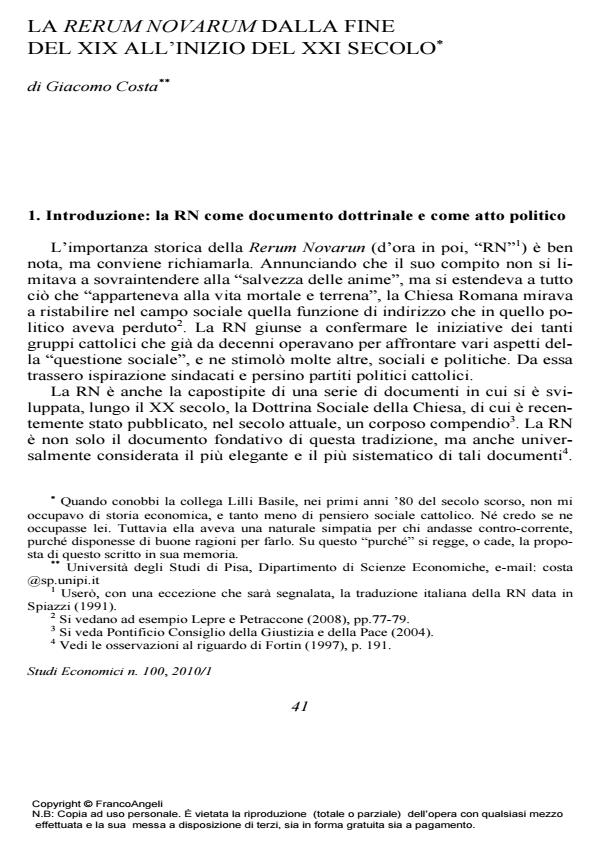Rerum Novarum from the End of the XIX-th to the Beginning of the XXI-th Century
Journal title STUDI ECONOMICI
Author/s Giacomo Costa
Publishing Year 2010 Issue 2010/100
Language Italian Pages 23 P. 41-63 File size 557 KB
DOI 10.3280/STE2010-100004
DOI is like a bar code for intellectual property: to have more infomation
click here
Below, you can see the article first page
If you want to buy this article in PDF format, you can do it, following the instructions to buy download credits

FrancoAngeli is member of Publishers International Linking Association, Inc (PILA), a not-for-profit association which run the CrossRef service enabling links to and from online scholarly content.
To the contemporary historian, Rerum Novarum is a socio-political event. I will take it at its word and study it for its content rather than its impact. If the Church failed to return to the centre of European affairs, this must be due to its failure to suggest a constructive approach to socialism and industrialisation. The anthropology espoused by RN is a caricature version of Thomism: man is moved by impulses that are self-justfying - inasmuch as they are natural - and provide the foundations for individual rights, especially, property rights. Together with the fact of men’s inequality, deemed both ineluctable and socially providential, this would make for a harmonious hierarchical society, which is indeed the ideal RN extols. But it cannot explain the industrial revolution, nor the creation of wealth, nor the much feared unfolding of social conflict. This is why the RN policy proposals are so weak and anachronistic.
Keywords: industrial revolution, social question, Catholic social doctrine
Jel codes: B19, N13, P16, Z12
- Once upon a time: the neo‐Thomist natural law approach to social economics Luca Sandonà, in International Journal of Social Economics /2013 pp.797
DOI: 10.1108/IJSE-08-2012-0161
Giacomo Costa, La Rerum Novarum dalla fine del XIX all'inizio del XXI secolo in "STUDI ECONOMICI " 100/2010, pp 41-63, DOI: 10.3280/STE2010-100004